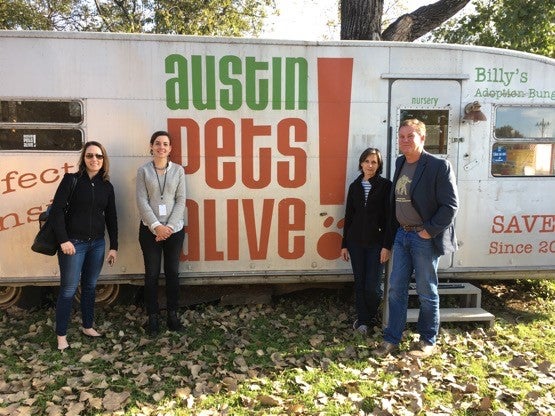New DU Research Measures Impact of Denver's Pit Bull Ban

It’s been 30 years since Denver’s controversial pit bull ban began, and this November, for the first time since it was enacted, voters will have the opportunity to decide the prohibition’s fate.
This isn’t the first challenge to the policy, described as breed-specific legislation (BSL). As recently as February 2020, Denver’s City Council voted to repeal the ban, but that decision was swiftly vetoed by Mayor Michael Hancock, who cited public safety and irresponsible pet owners in a letter to council representatives.
Since the ban’s adoption in 1989, the question of public safety has, in large part, shaped the conversation over Denver’s BSL, but a new University of Denver study, published in Animal Law Review by the Institute for Human-Animal Connection (IHAC) at the Graduate School of Social Work (GSSW), calls this argument into question.
“There are a lot of passionate opinions around the BSL, or the pit bull ban,” says GSSW’s Kevin Morris, American Humane endowed chair and research associate professor. “There’s also a lot of misinformation and assumptions, so we are trying to bring data and objective analyses of those data to the discussion, so that people can make more informed decisions about keeping the legislation or coming up with something that might be more effective.”
Conducted in conjunction with DU’s Sturm College of Law, as well as with researchers in economics and business, the research provides comprehensive data regarding the effectiveness and costs of Denver’s pit bull ban. Morris and his team began digging into this topic three years ago, asking such questions as: What have been the economic costs of BSL? How has it impacted animal welfare outcomes? And what is the social impact?
Using data from Denver Animal Protection, the agency that enforces the BSL, the study found that the city has spent more than $100 million enforcing the ban, with little measurable impact on public safety. Morris notes that while bites from “pit-bull type dogs” (pit bull isn’t a formal breed) have gone down in the prohibition’s 30 years, so have dog bites overall.
Morris says the most “stunning” finding depicts unequal enforcement of the pit bull ban in the city’s most vulnerable areas, particularly in places where, the study explains, “racially diverse communities intersect with predominantly white neighborhoods.”
“The enforcement of BSL has taken place primarily in our communities of color in Denver,” Morris says. “And this criminalization of certain pet owners has exacerbated the barriers they already experience to accessing pet support services.”
According to DU research associate and project manager for the study, Sloane Hawes, the BSL not only effects Denver, but also its neighbors.
“The animal welfare system in Colorado thrives through collaboration,” she says. “Having the BSL in Denver means that any pit bull that comes into the care of Denver Animal Protection must either be euthanized or transferred to another community.”
The study refers to this phenomenon as the “bad neighbor effect,” largely because it adds pressure to the state’s sheltering system. To save canine lives and ease Denver’s burden, nearby shelters partner with Denver Animal Protection to take in pit bulls, offering them a chance at adoption.
The study comes just as Denver voters are headed to the polls in November to decide whether to replace the ban with a registration system for pit bulls. If passed, the ballot measure would allow pit-bull type dogs in Denver, if the owner allows the city to track health and safety metrics, including vaccinations, microchipping and incidents. If the pet owner violates any of these guidelines, the dog would not longer be permitted in the city.
While the study doesn’t endorse or condemn this option, it does identify efforts elsewhere that have reported promising outcomes.
“There are communities throughout the U.S. and internationally that have adopted comprehensive, breed-neutral dangerous dog policies and seen improvements in public health and safety outcomes such as decreases in bite cases or adherence to leash laws,” Hawes says. “Better yet, the field of animal welfare is beginning to recognize the need for more proactive support services that can keep pets with their families, like affordable veterinary and behavior care, so that punitive enforcement like BSL isn’t necessary.”
Alternative options, Hawes adds, would help Denver inch closer to alignment with IHAC’s humane communities framework, which encourages policymakers to consider a holistic approach to legislation and programs.
“The conclusion we draw in the paper is the BSL is detracting from Denver’s perception as a humane community. On a national level, Denver is really a leader in animal sheltering in all ways except for the presence of BSL,” she says. “At the heart of what the humane communities framework proposes is the recognition that the health of humans, animals and the environment are interconnected. The health and resilience of an entire community is compromised when certain populations of people or animals are disproportionately targeted.








